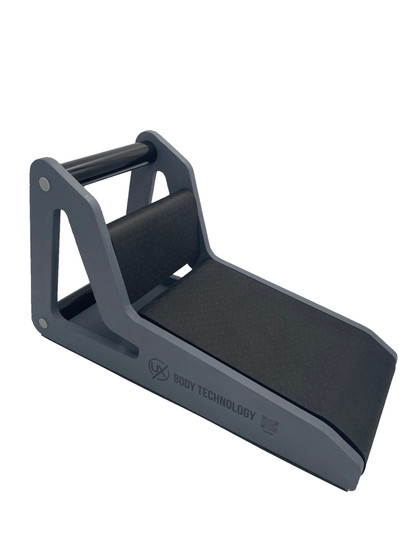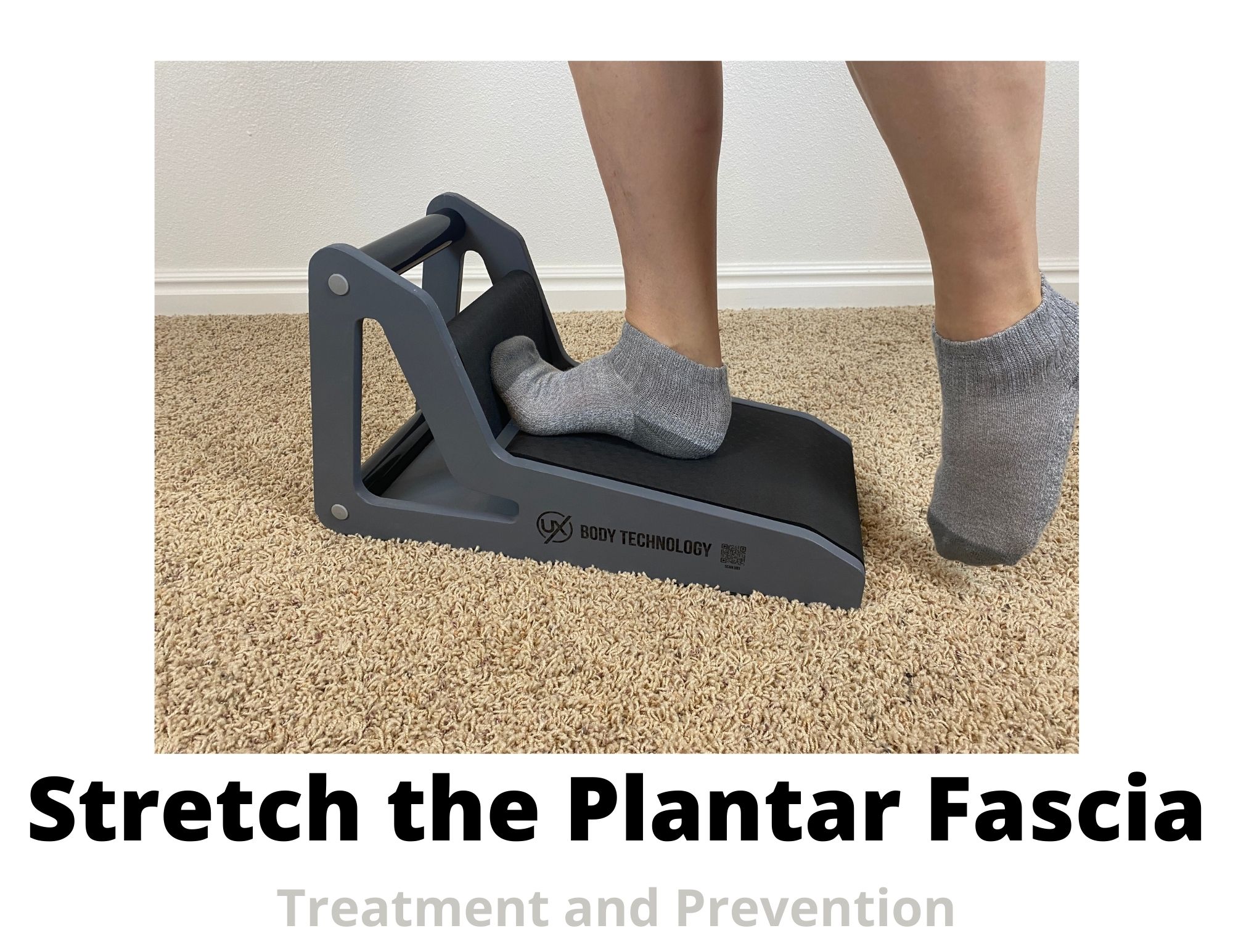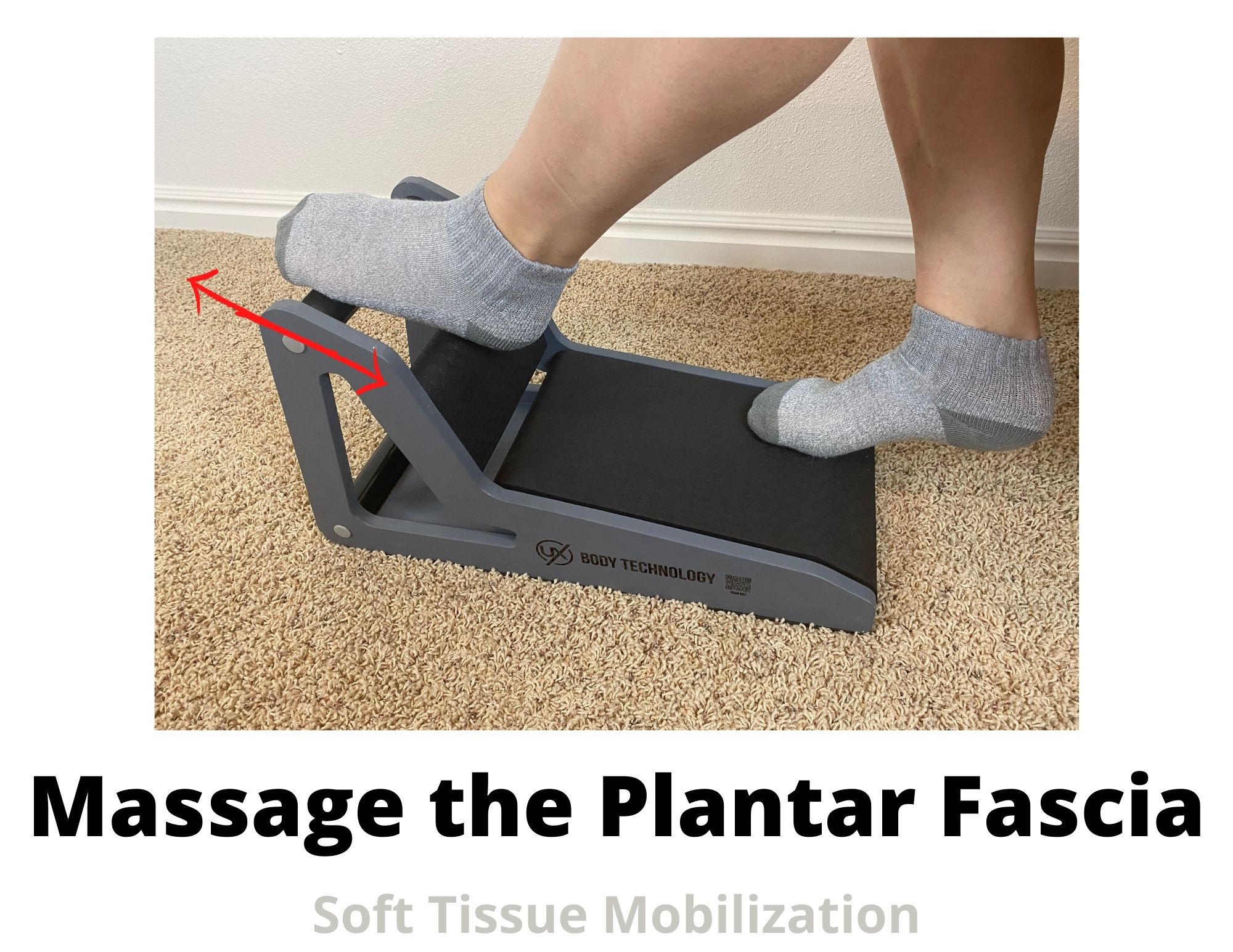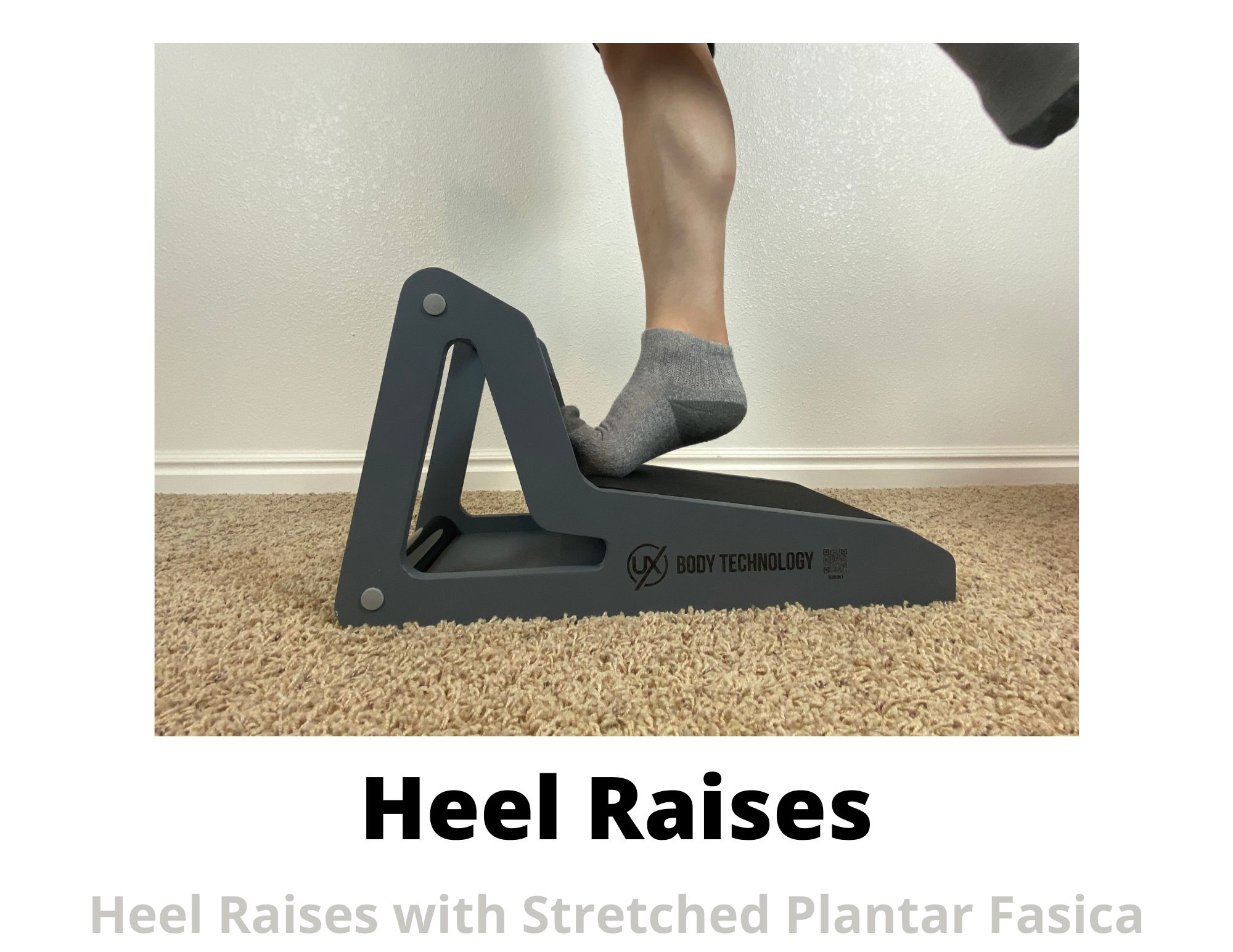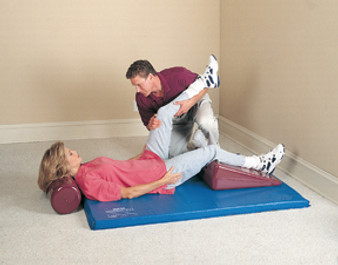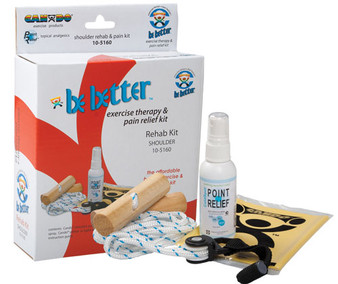The FootRamp | Calf Stretching and muscle building | Plantar Fascia Rehabilitation
The connection between tight calf muscles (gastrocnemius and soleus) and an increased risk for developing plantar fasciitis is centered in the fact that tight calf muscles can lead to excessive pronation positioning of the foot, which causes an overcompensation of the plantar fascia at the first metatarsophalangeal joint. This produces excessive stress or tension at its attachment on the calcaneal tubercles leading to irritation, pain, inflammation, and possibly even microscopic tears in the tissue.
The effective treatment of plantar fasciitis consists of a multi-faceted approach that includes:
- Icing and anti-inflammatories during times of flare ups to calm it down until the therapeutic interventions take affect
- Stretching of the calf muscles (gastrocnemius and soleus)
- Stretching of the plantar fascia
- Massage of the plantar surface of the foot
- Soft tissue mobilization
- Strengthening the gastrocsoleus complex and plantar fascia
The FootRamp by UX Body Technology is a new and revolutionary device designed to address the key therapeutic intervention techniques for effective treatment of plantar fasciitis, as well as tight calf muscles, Achilles Tendinitis, shin splints, fascial adhesions, and to increase strength and size of the calf muscles.
How to Use The FootRamp
| Photo | Purpose/Benefit |
| | To stretch the calf (gastrocnemius muscle and soleus muscle) Because tight calf muscles can lead to an abnormal and excessive pronation of the foot, which in turn places excess tension on the plantar fascia, getting the calf muscles to relax and in time to elongate, will reduce this abnormal and unbalanced stress on the plantar fascia, reducing the pain. Further, creating more flexibility in the calf muscles will reduce stress forces applied to the muscles to reduce calf pain.
|
|
| To stretch the plantar fascia Because the plantar fascia attaches from the calcaneal (heel) tubercles traversing the length of the bottom of the foot and crossing the metatarsophalangeal joints of the toes (especially the big toe), placing them in a hyperextended position will stretch the plantar fascia and reduce the tension in the tissue. |
| | To massage/roll the plantar surface of the foot (plantar fascia) & perform soft tissue mobilization (Myofascial release) Moving or rolling the bottom of your foot back and forth along the roller bar is in essence massaging the sole of the foot. This massaging action increases blood flow to the area, including the plantar fascia, which enhances the healing rate of affected tissues. |
|
| To massage/roll the calf muscles to help them relax Moving the leg back and forth across the top roller bar, will increase blood flow to the area as well as gradually help the calf muscles relax and reduce the tension pull on the calcaneus and the associated pain. Also, myofascial release therapy is achieved. |
|
| To perform soft tissue mobilization of the tissues that may be adhering to the plantar fascia Sometimes irritated and inflamed tissues can “adhere” to surrounding tissues, and then when movement occurs it causes pain. “Releasing or breaking the adhesions” by scrapping the sole of the foot against the side of the FootRamp allows tissues to move freely as intended without the pain. |
|
| To perform strengthening exercises of the gastrocsoleus complex muscles and to strengthen the plantar fascia To strengthen the calf muscles and the plantar fascia so they can withstand the stresses and strains placed upon them and not become irritated leading to plantar fasciitis, perform heel raises with toes hyper extended – progressing in intensity, by performing bilaterally and then unilaterally through a greater range of motion. Not only will this strengthen the muscles, but also the fascia of the plantar fascia and its continued connection to the fascia of the gastrocnemius and soleus |
The FootRamp is built with industrial strength durability for inclusion to any gym or clinic, but is also a desirable home exercise device, especially for individuals suffering with plantar fasciitis. This device is an effective exercise intervention for:
- Plantar fasciitis
- Achilles Tendinopathy
- Shin Splints
- Tight and sore calf muscles (gastrocnemius & soleus)
- General foot pain
- Myofascial release therapy





